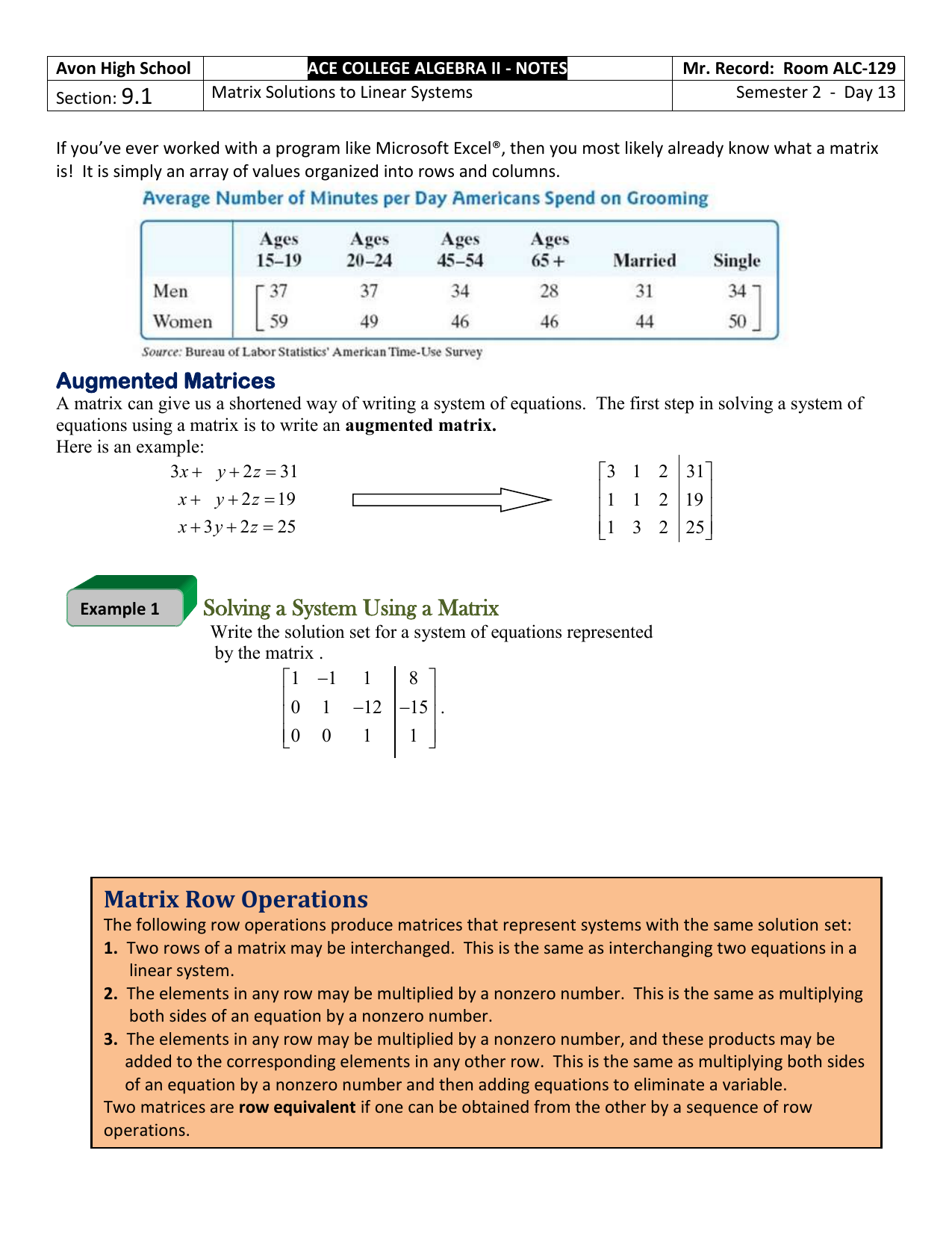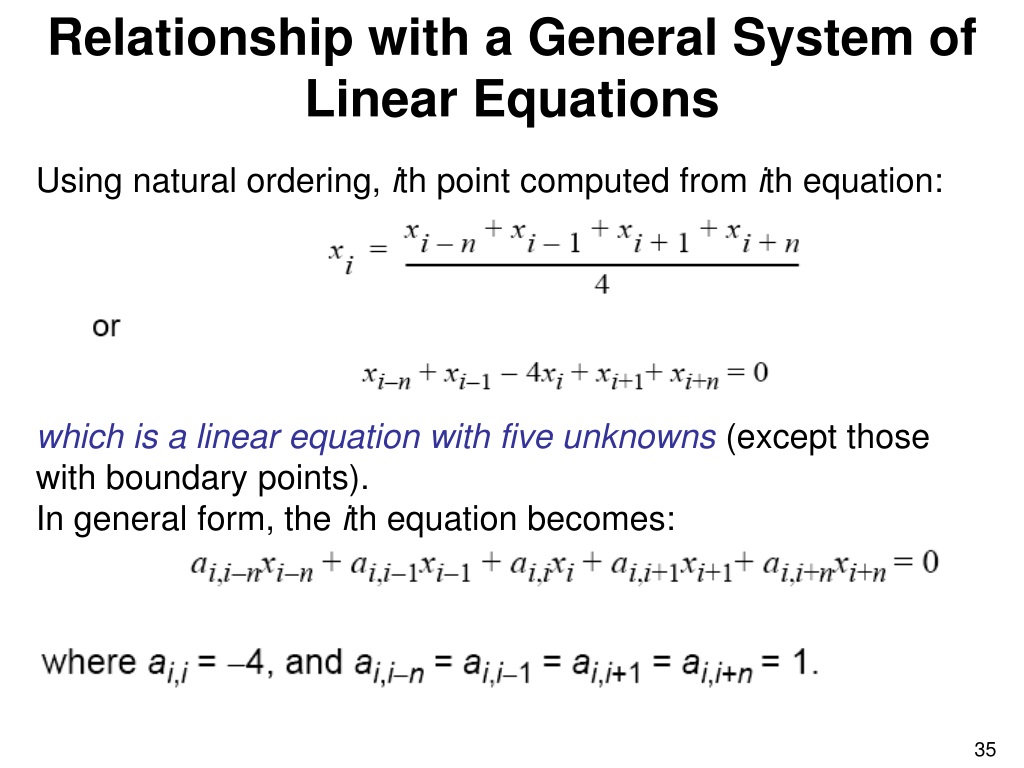
Doing this for all variables of the equation will lead to a solution of the system if it exists.
An example for a direct method is to solve the system for one variable this variable can be eliminated and replaced by an expression that only uses other variables, or a number. Iterative methods use many steps to get a solution, direct methods only need one step: There are two categories of methods for solving a system of linear equations. In many cases there will be an infinite number of solutions. There are many solutions the exact number depends on the properties of the field. There a three cases when looking for solutions to a system of linear equations: A, x and b are all part of the same algebraic field. The system of equations can then be solved using the multiplication operation defined on matrices. Mathematically, the vector defined above is a 1-by-n matrix. If no such values can satisfy all of the equations in the system, then the equations are called "inconsistent."ģ x + 2 y − z = 1 2 x − 2 y + 4 z = − 2 − x + 1 2 y − z = 0. So, the person solving the system of equations is looking for the values of each variable that will make all of the equations true at the same time. A "system" of linear equations means that all of the equations are true at the same time. "Linear equations" mean the variable appears only once in each equation without being raised to a power. Note that we’ll address Solving Systems using Reduced Row Echelon Form here.Mathematicians show the relationship between different factors in the form of equations. \(\displaystyle \begin\), since it’s on the 2 nd row and it’s the 1 st entry.Īgain, matrices are great for storing numbers and variables – and also great for solving systems of equations, which we’ll see later. The actual matrix is inside and includes the brackets: You may have heard matrices called arrays, especially in computer science.Īs an example, if you had three sisters, and you wanted an easy way to store their age and number of pairs of shoes, you could store this information in a matrix. Usually, a matrix contains numbers or algebraic expressions. Number of Solutions when Solving Systems with Matricesĭeterminants, the Matrix Inverse, and the Identity MatrixĪ matrix (plural matrices) is sort of like a “table” of information where you are keeping track of things both right and left ( columns), and up and down ( rows). Solving Systems with Reduced Row Echelon Form Applications of Integration: Area and Volume. Exponential and Logarithmic Integration. Riemann Sums and Area by Limit Definition. Differential Equations and Slope Fields. Antiderivatives and Indefinite Integration, including Trig Integration. Derivatives and Integrals of Inverse Trig Functions. Exponential and Logarithmic Differentiation. Differentials, Linear Approximation, and Error Propagation. Curve Sketching, including Rolle’s Theorem and Mean Value Theorem. Implicit Differentiation and Related Rates. Equation of the Tangent Line, Tangent Line Approximation, and Rates of Change. Basic Differentiation Rules: Constant, Power, Product, Quotient, and Trig Rules. Differential Calculus Quick Study Guide. Polar Coordinates, Equations, and Graphs. Law of Sines and Cosines, and Areas of Triangles. Linear and Angular Speeds, Area of Sectors, and Length of Arcs. Conics: Circles, Parabolas, Ellipses, and Hyperbolas. Graphing and Finding Roots of Polynomial Functions. Graphing Rational Functions, including Asymptotes. Rational Functions, Equations and Inequalities. Solving Systems using Reduced Row Echelon Form. The Matrix and Solving Systems with Matrices. Advanced Functions: Compositions, Even and Odd, and Extrema. Imaginary (Non-Real) and Complex Numbers. Solving Radical Equations and Inequalities. Solving Absolute Value Equations and Inequalities. Solving Quadratics by Factoring and Completing the Square. Introduction to Multiplying Polynomials. Scatter Plots, Correlation, and Regression. 
Algebraic Functions, including Domain and Range.Systems of Linear Equations and Word Problems.Introduction to the Graphing Display Calculator (GDC).Direct, Inverse, Joint and Combined Variation.Coordinate System and Graphing Lines including Inequalities.Types of Numbers and Algebraic Properties.Introduction to Statistics and Probability.

Powers, Exponents, Radicals (Roots), and Scientific Notation.Multiplying and Dividing, including GCF and LCM.






 0 kommentar(er)
0 kommentar(er)
